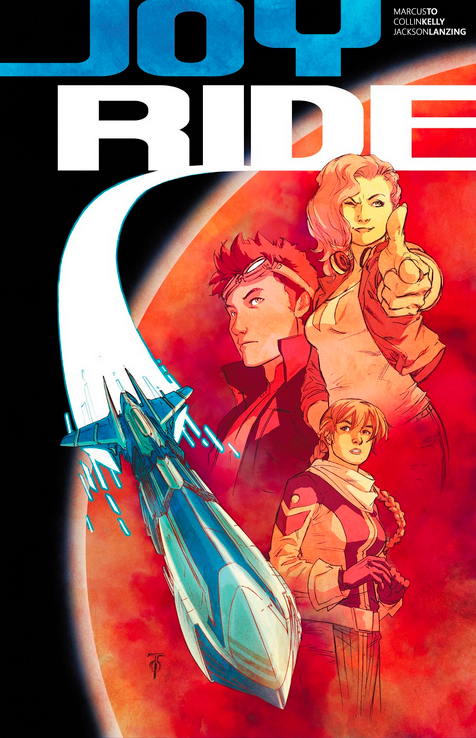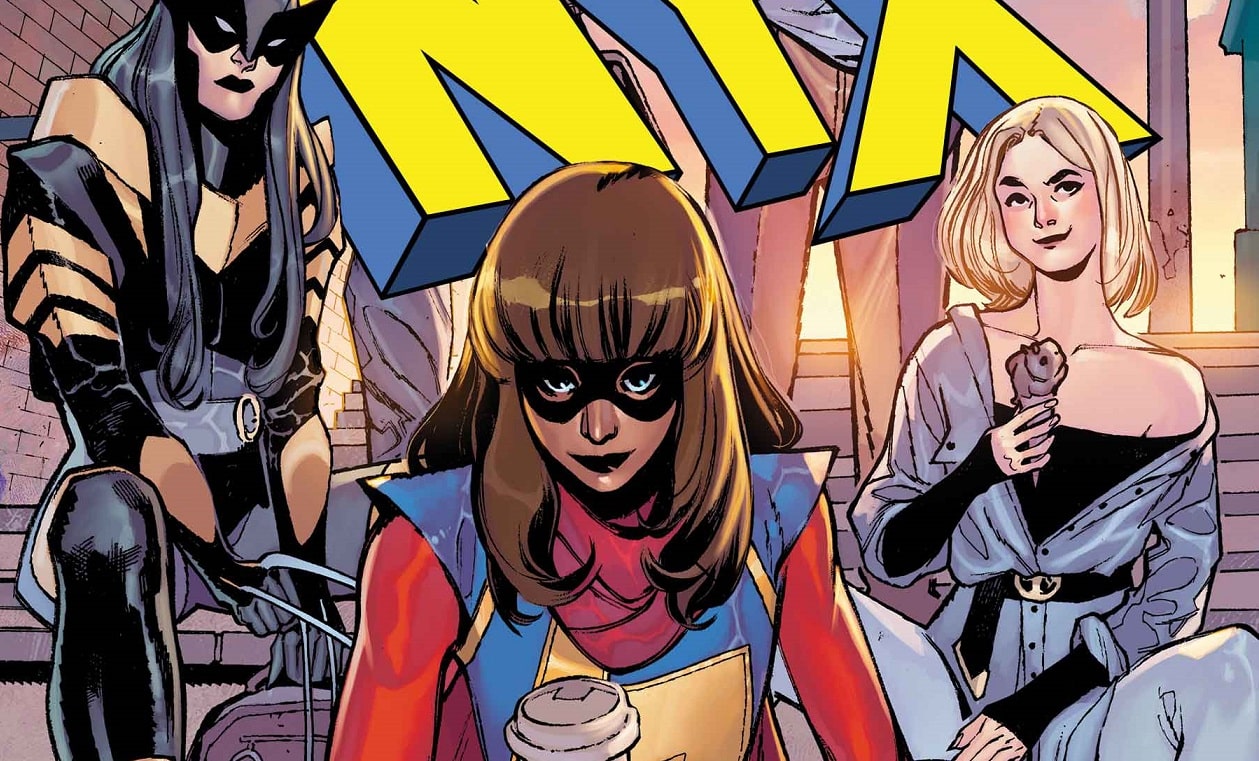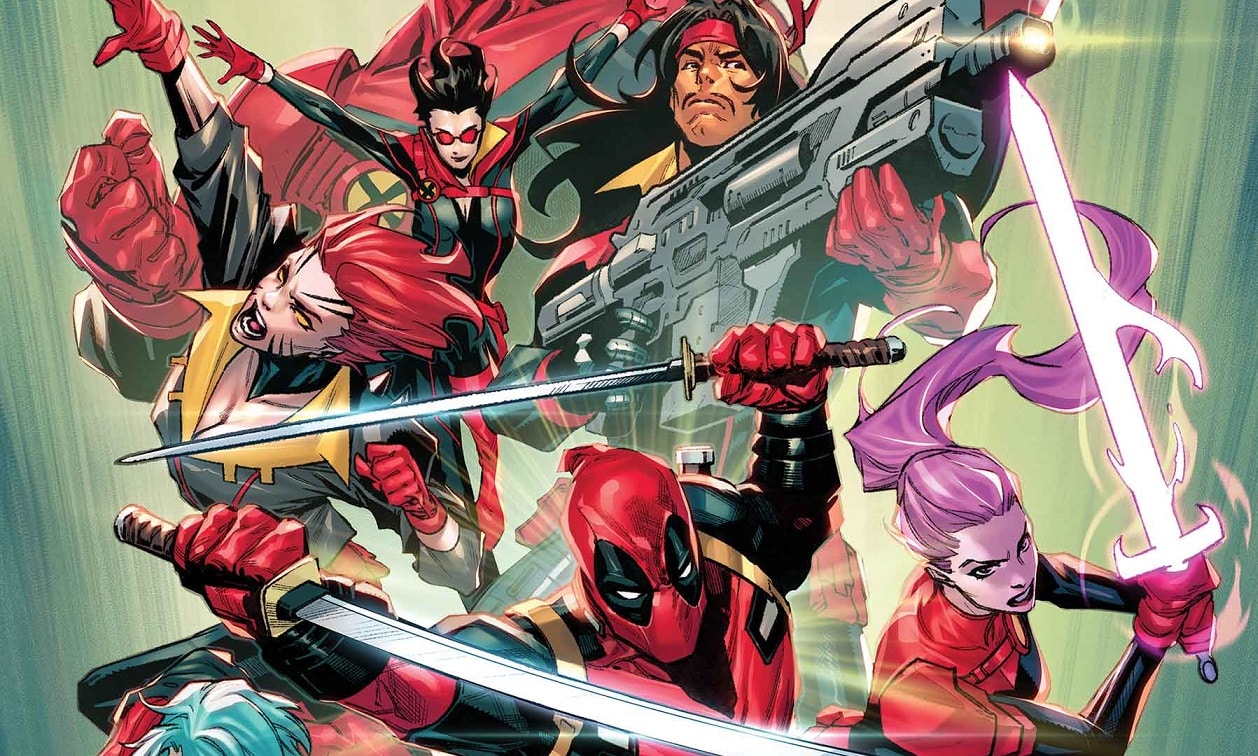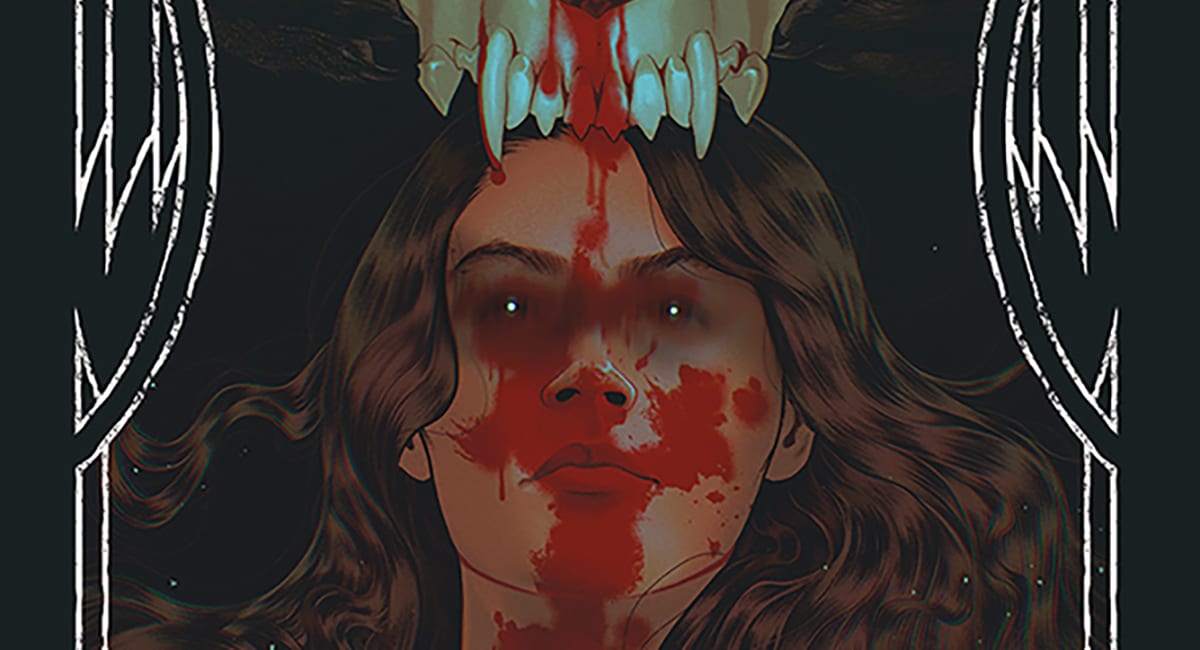Authors Collin Kelly and Jackson Lanzing built a magnificent world in Hacktivist alongside Marcus To and BOOM! Studios. With their new upcoming project Joyride, the team is set to build a dynamic world from scratch all over again. The new title is a saga of done-in-one comics featuring original characters and stories hand-crafted by these creators. The Joyride property presents a brand risk for the Archaia division of BOOM! Studios, as they are launching one of their first ongoing series. Collin Kelly sat down with Comics Beat to talk about the brand new world they are creating in the title with this ambitious new ongoing series.
How did publisher BOOM! Studios first let you know that Joyride was set to make its debut on AT&T’s U-Verse documentary in the R.A.I.D. studio?
That actually came as a surprise to us; we didn’t really know that was going to be how the process worked. We knew that they were going to be filming Marcus and R.A.I.D. for quite a while up in Toronto. We put together all of our Joyride materials for Comic-Con, getting ready for our first big comics pitch. Then, they said, “Oh by the way, [the pitch is] going to be on camera.” That minute-and-a-half footage [in the documentary] was actually more than an hour of pitching. Filip Sablik and Stephen Christy had us do it multiple times in a couple of different ways.
What format will we initially see the comic in?
We’re thrilled to announce that Joyride will be in single issues. We will be launching one of Archaia’s first ongoing comics series. They will be stand-alone, action-packed adventures. Before BOOM!, Archaia didn’t have the capability to do floppies, instead exclusively making their amazing hardcovers. Now they’re doing work like Jim Henson’s The Storyteller series. Which, if your readers aren’t checking that out, they certainly should. Hacktivist was on the very edge of that wave, able to play in both worlds. We got those awesome single issues with covers by Scott Newman and we got the benefit of the Archaia hardcover.
I heard on the documentary that you said something about Marcus having this idea for a long time. Can you trace back the first inkling of the sci-fi universe that Marcus had put together?
Oh absolutely! This was so cool. Hacktivist was not on the shelves. We were all just enjoying the fact that we had put a book together that we enjoyed working on and were so proud of. Jackson and I were thinking about what our next move would be, and Marcus comes up to us and says, “Guys, I really loved working with you, it was such a joy. I’ve been noodling around with this idea. In fact, I’ve had this idea since high school; I’d love for you guys to take a look.” In his traditional Marcus way; he’s very humble about it. He said, “I don’t know if you guys are gonna like it. I don’t know if you are going to want to work with me again.” Jackson and I were just rolling our eyes, like “Duh, obviously we wanna work with you, man.” He showed us what essentially was a 100-page graphic novel he drew in high school called Maximum Velocity. I do some drawing myself, I am a bit of an amateur cartoonist, so I know what most people’s high school art looks like; pretty bad. His art looked like Rob Liefeld, good Rob Liefeld…pockets and pouches and tiny waists. The detail work and the expression and the kineticism of Marcus’ work was just so stunning our jaws dropped. He tells us the story is about three teenagers on a future Earth that really sucks, so they steal the spaceship to explore the universe. He couldn’t see our faces, but Jackson and I just shared this look. Independently, Jackson and I had already started developing our next feature concept, which was about how to steal a spaceship. Right then, we knew our collaboration on Joyride was meant to be.
Without speaking for Marcus, do you have any insight as to how the man goes from Rob Liefeld to the R.A.I.D. studio?
I’m not quite sure what his personal journey is, but I can tell you that Marcus is one of the most introspective and humble artists we’ve ever worked with, or that I have ever known. Everything he draws and everything he sits down to do, he’s critical of. He looks at it and says how can I fix this, how can I make this more unique? I’m not quite sure how he went from his many pockets and tiny waist sizes of his Liefeldian High School days to his emotive, almost anime-like work he creates now, but I know that his journey developed from a place of self-examination and the cultivation of a unique vision, which is what I think he brings to the table.
How did the project go from Maximum Velocity to Joyride?
Jackson and I always look at the big picture. We get to play in a world of future alien races. We’re big science fiction nerds, so anytime we get to play in that universe we get really excited about where it’s going. Uma, Dewydd, and Catrin all have qualities that are reflections of ourselves in that age. In Uma, we created someone who is so kinetic and optimistic and punk rock and “fuck you.” At her core, though, she is this very fragile, very damaged person who is just trying to find out who she is.Once we had the heart of it, we realized that this emotional depth to the character is something we could hang the entire story on. We had this proactive, energetic and optimistic woman at the core of it all. We knew she had to have to have a quiet nerd at her side that secretly had a crush on her, because what young writer hasn’t been that quiet nerd with a crush on that awesome punk rock girl he knew from the neighborhood? To balance it out, we needed a strong curmudgeon; we needed someone to say, “Stop! That’s a bad idea; let’s think this through.” That person, for us, is Catrin. For us, it really comes down to the Kirk/Spock/ Bones of it all.
What does your process with Jackson look like for a comic book script?
Well, we pull a bunch of ideas out of a metaphorical hat, and then we…start wrestling. [Laughs] We’ve been writing together for almost seven years. Primarily, we write screenplays, features and television. There is a very simple process for that kind of writing: breaking out the outline, divvying up the pages, doing a pass, trading over, doing a pass over the other guy’s stuff. At the end of everything, we nod at each other and pat each other on the back and say, “it’s great!” Comics are different in interesting ways. Jackson has an incredibly visual sense about him, and will often just write raw panels, whereas I’ll sit down and just write dialogue. We still break out the pages; he does his and I do mine. In features we usually write fairly fluidly with one voice, but with comics we end up voicing the strangest, weirdest and craziest ideas. We sit back and say to each other, “You’re a nut! Where did you possibly come up with this?” On the other hand, sometimes it’s like, “This is terrible! You just totally screwed the pooch!” and then we have a sit and stare daggers at each other for a while before we realize what the answer is, which is almost inevitably a hybrid of what we both attempted, made better by the fusion.
I was looking through Jackson’s website and he said something really interesting in his most recent blog ‘Personal confession time: I’ve done a lot of shitty work this year.’
When I read that I had the same reaction as other people, because what I’ve read from him this year has been pretty awesome. I think what he meant was that, for everything that people see of his work and our work, we’ve written draft-after-draft of things that no one ever catches wind of. Jack himself will do draft-after-draft before it even gets to me. What we, as a team, have found ourselves doing a lot of is falling into those old routines. There’s a saying — if it comes easy, it’s probably because it’s not original. If you find yourself falling into a story break right away or easily figuring out what the characters are going to say, it’s probably because some part of your brain internalized it from another story. You probably aren’t even conscious of what you’re doing.
I think that’s the reason a lot of young writers find writing to be so easy; they’re just regurgitating things that they’ve already consumed. I think that’s what he was saying [with that blog comment]. We’ve worked on so many stories throughout the past year. So many stories have started so easy and so clean that we realized we had to push ourselves to go further. That’s where we break it and start it again, that’s where all this comes from. If it’s too easy? Just nuke that sucker and let’s build it from the ground up, let’s tell this story backwards, let’s tell this story from multiple perspectives and see where we end up. It’s only through originality and innovation that we are gonna be telling stories that are worth a damn.
In comics, even though you can write a script that’s airtight, when writers get back finished artwork, creators often talk about how they change dialogue when the finished pencils come back. Does that fit into your process?
Comics, more than any other medium we work in, is a collaboration of two types of creatives: the artists and the writers. Jackson and I have found that we can be…‘wordy’ is the easiest way to put it. We come from Hollywood, where you really need to spell everything out or you lose the attention of producers. When you lose them, it’s hard to get them back and generally, the project is dead. When we give pages to someone — and, so far, our primary collaborator in comics has been Marcus – and they give us the work back, we often realize half of what we have been writing isn’t actually needed, because Marcus has perfectly captured what we have been trying to say in a look or a glance from a character.
We rarely, if ever, add, but we often find ourselves slashing our dialogue because it’s simply not needed. There’s also an interesting third component: Rebecca Taylor, who’s was our editor over at Archaia. She’s the person who has been watching the development of the story and all of our scripts from the outside. She’s the one who really looked at what we do, and what Marcus does and says, “Guys what we really need here is an extra bit of this or an extra piece on that.” It’s through her guidance that we were really able to make our work pop. Now, she’s moved on to DC’s Editorial, and while she’ll be missed, we know that she’s going to kick major Bat-butt.
Does Marcus ink and color his own work?
Marcus inks his own work with a pen and ink, which blew my mind. It’s just stunning because he does everything in the classic style. In fact, for Joyride we’re going to set up a camera in his workstation to capture how he works. The Joyride experience isn’t just going to be on the page; we’re going to be creating a robust online presence. We have a Facebook page already going (Facebook.com/JoyrideComic). We’ll set up a Tumblr. We want to explore the fashion and the music of Joyride. We’re going to bring an entire universe to the fans. We really want them to engage with us as much as possible. It’s a story about growing up, it’s a story about finding yourself and it’s a story about having fun.
In the documentary, it’s mentioned that Marcus’ style has a more youthful vibe. Since this comic has a more perhaps anime and manga feel, how is it that you’re sort of evoking that vibe?
There’s a fundamental quality to Marcus’ art that is so kinetic and fun, forcing him to do anything that is grimy and gritty and brooding seems to be a waste of his talent. As soon as he was on board with the project we wanted to make sure to play to his strengths, we want people to look at this book and say “Damn, Marcus To is cracking this open.” We want to give him all the toys he needs to really shine, so that means big space, fun aliens, crazy worlds and sexy fashion. But we also want to showcase what Jackson and I bring to the table – wild characters, genuine emotionality, and plots that will leave your breathless.
How is it that Marcus’ youthful style can be applied to a more serious setting like some of the scenarios featured in Hacktivist?
Let me tell you a story about our first experience with Marcus. We were trying to find an artist for Hacktivist. Rebecca Taylor brought us a couple of different options, all amazingly talented people, but we weren’t quite sold on any of them. Then we saw Marcus’ work on Cyborg 009: we realized his work was beautiful, kinetic, sexy and fun…but Hacktivist has a certain amount of tragedy. So we looked him up online and sorted through his work. We came across one of his images of a small family sitting around a dinner table. You can sense the history and heartbreak and all the journeys this family had been on. There was nothing sexy about it; it was just this quiet moment. We could see on the faces of these characters the lives that they have lived. We knew in that moment that Marcus was the exact artist to bring the characters of Hacktivist to life. He can do things with the human face, posture and gestures that’s completely evocative of everything we needed, and that’s partly because he doesn’t caricature. Yes, his world is very bright and there is a certain amount of anime influence, but I think he draws with a realism that few creators can approach.







